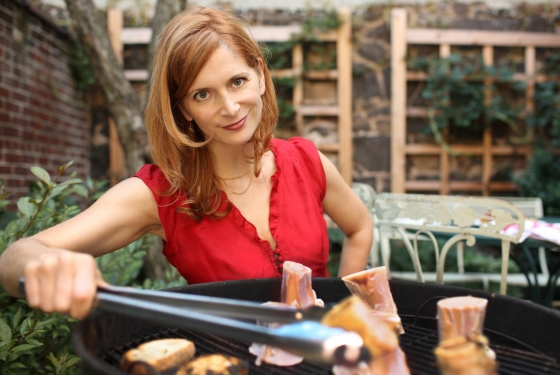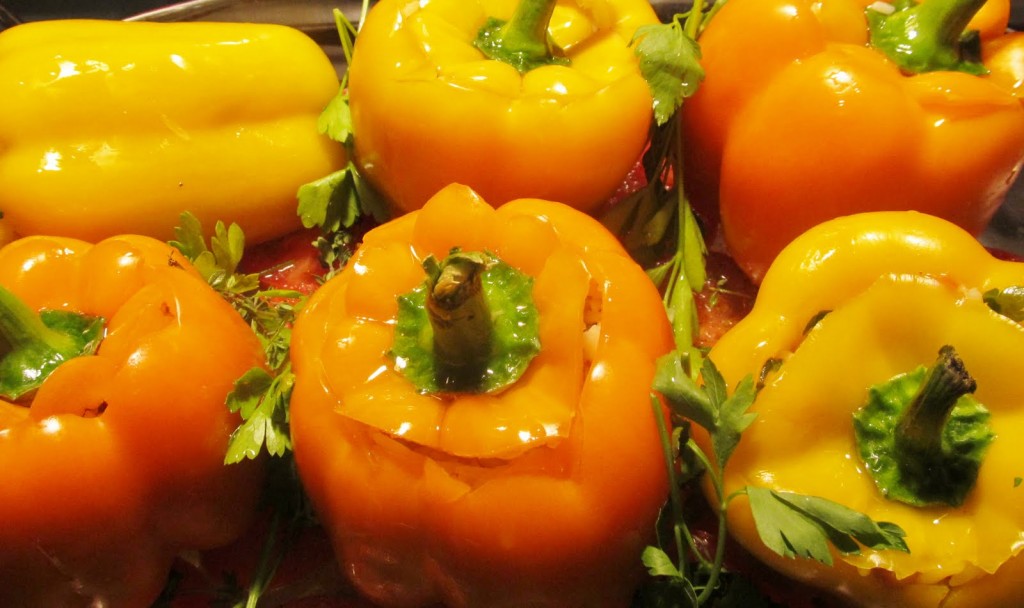Melissa Clark dishes about how she got to be one of the most successful and prolific food writers in America
by Brian Gresko
Chances are somewhere in your cookbook collection, you own a book by Melissa Clark. She’s co-written over thirty of them, causing one interviewer to dub her “the Joyce Carol Oates of food writing.” Her name also graces the pages of The New York Times Dining Section each week, where she writes the column “A Good Appetite.” The column’s long-standing popularity led to a cookbook of its own in 2010, In the Kitchen with A Good Appetite, in which Clark pairs delicious recipes with personal stories detailing both the dish’s development and her life-long passion for food. Her latest book, Cook This Now, brings readers into her kitchen month by month, with 120 recipes that emphasize fresh, seasonal, and local ingredients.
I had the chance to talk with Clark over a rich, spicy glass of rumtopf – a liquor made by macerating fruit in rum – in a cozy sitting room just outside of her kitchen, which is, for one who spends most of her time there, a modest-sized space, fitting a Brooklyn brownstone. (Clark’s a native Brooklynite.) However, behind those clean cabinet doors teems a spice collection fitting a queen, though Clark prefers to call herself a kitchen pack-rat. The fridge, she told me, has been over-run with condiments of all sorts. This amazingly well-stocked though unassuming room serves as a metaphor for her work at large.
“I am a home cook,” she said. “It’s pretty much just me and another person working in the kitchen, and so I’m always thinking, how can we get this done quickly? When people are in test kitchens, it becomes different. You probably have someone washing your dishes and mopping your floor.”
When writing her column, “I think of myself as the cook down the block who knows a little bit more than you do”—though her years of experience means she knows more than just a little. Her modesty, however, is part of her column’s appeal. Clark’s authoritative and smart, but approachable and chatty. A natural storyteller, the essays that accompany the recipes include details about her husband Daniel and daughter Dahlia, or advice from her mother. “It’s quirky,” Clark admitted.
Often, the recipes develop by association, as she recalls great meals she’s enjoyed and lets their flavors inspire her own cooking. Not surprisingly, before deciding to pursue an MFA in Journalism from Columbia, Clark considered studying history, perhaps even writing historical novels. She ranks the books of Barbara Tuchman among her influences, which may account for the element of cultural anthropology that informs her decisions at the stovetop.
“When I travel I always see what people are doing in the kitchen. Dishes that are a part of a culture are there for a reason. They make sense on a lot of levels. The ingredients are all available or in season at the same time, they all taste good together. That’s why they go on from generation to generation. I like to think about the logic of these dishes and apply it to a spin-off, or simpler version.”
Most nights, Clark will free-style dinner based on what she has in the fridge from the local Greenmarket, or by whipping left-overs into something new. These meals are less masterpieces, and more sketches.
“If I hit upon something that’s really great, then I’ll go back and test it. I’ll have a concept. Like, ‘Remember that time I added the preserved lemons to the scallops? That was really good! So let me come up with a dish that has scallops and preserved lemons, and what could I add to that? Maybe some tomatoes and garlic…’
“With that in my head, I’ll make that dish again for me and Daniel, but I’ll write it down. That will be the beginning of a recipe. Then I’ll take the dish and test it again. It’s a several step process.”
Growing up in a house focused on food – on family vacations to France, her parents made a hobby of visiting as many Michelin starred restaurants as they could – Clark went on to cut her teeth in low-level kitchen positions, then catered her way through grad school. She learned fast that she would rather be writing. “I hated the schlepping of catering. You’re always running around! I’m very sedentary. I like to sit. I like to be at my computer. Like most writers, I don’t like to leave the house. I’m kind of asocial.”
Her dream, early on, was to write for The New York Times, something she worked her way slowly toward. In the beginning, she never turned down a job. “I wrote the boring stuff, the exciting stuff, restaurant reviews, interviews, Q&As, trend pieces. I wrote it all, because I had to.” She once re-wrote a cookbook in two weeks.
She even interviewed for a job she didn’t want, as a news assistant at the Times, just to get her foot in the door. The strategy paid off, as the food editor began offering her freelance assignments. She made the most of the opportunity. “I handed everything in on time. I worked really hard to make those pieces perfect – I showed them to my mother, made my father read them, they all edited them. The fact is, it doesn’t matter how good you are, especially at the beginning. Really, talent is so small a part of the whole success component. It’s more about being likable, and easy to work with, and handing clean copy in on time. The New York Times learned that they could call on me and I’d deliver. Even if they called the night before, I never said no.”
Simultaneously, she cowrote books with celebrity chefs like Daniel Boloud and Peter Burley (of Manhattan’s Angelica Kitchen), to just flat-out celebrities, like Faith Ford. Helping chefs capture their recipes on the page continues to play a role in her career, with a forthcoming book from Brooklyn’s acclaimed pizzeria, Franny’s.
The one thing she’s learned from all of these projects is that there’s no cookie-cutter process to collaboration. “I’ve worked with chefs who’ve basically done nothing and I’ve done the entire book. I live off their fumes – go into their kitchen and talk with their sous chefs and figure out what they cook, then write their book from that. I’ve also worked with chefs, like Claudia Flemming from The Gramercy Tavern, who was at my side every second and it was amazing. The micro-managing control freaks are the best, because you learn so much from them.”
The wonderful side-effect of these projects is that Clark received tutorials from some of the country’s best chefs, learning how their most famous dishes come together, and, over the course of extensive interviews, how they think. It’s this font of knowledge and insight she draws upon in her own recipe developing, at first in her column, and now as a cookbook author in her own right.
Underlying Clark’s delectable dishes and charming stories runs an old-fashioned respect for the hard work involved in putting together a great meal, and in using the best, freshest ingredients. “I want people to eat real food, I don’t want them to eat processed food – nothing in my books is processed. Especially in this last book, Cook This Now, it is all fresh, all real. If people could just eat that way so much good would come of it in a global, environmental way.”
She gets this message across the way any good chef would; by making it impossible to turn down. Her food’s so good, and so straightforward to execute, that anyone interested in cooking just gets it.
“When I’m cooking for me and my husband, Daniel, he’s always like, ‘Just make something simple so we can be together.’” Clark said. “And I know that everybody thinks that, cooking is really about sharing food.”
Brian Gresko’s author interviews and essays on books and culture have appeared on The Huffington Post, The Atlantic.com, Salon, The Daily Beast, and The Paris Review Daily, among other publications. In print, he has published interviews in Glimmer Train Stories, Slice Magazine, and his conversation with author and New School faculty member Helen Schulman appeared in the paperback edition of her novel This Beautiful Life. He graduated from The New School’s MFA program in 2009 with a concentration in fiction.




